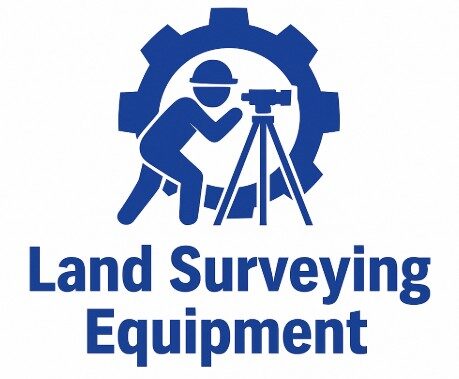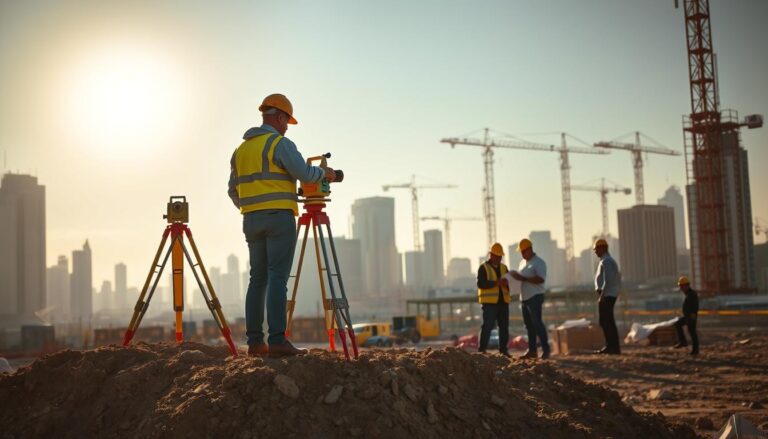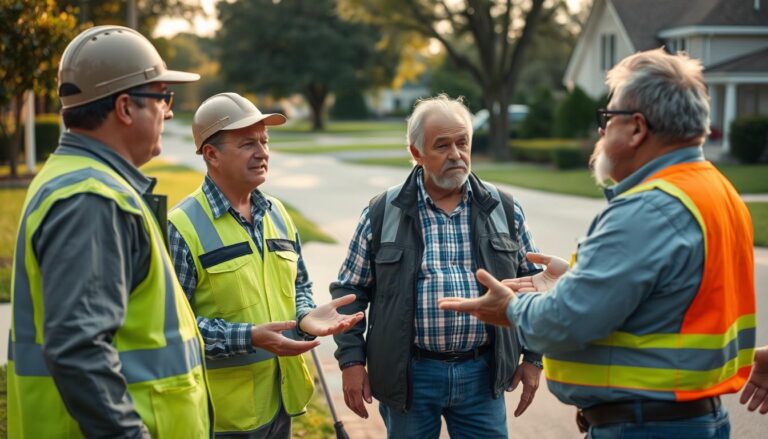What Contractors Wish Surveyors Knew (And Vice Versa)
The construction industry is complex and involves many people, like contractors and surveyors. Working well together is key for a project’s success.
A property survey gives important info about property lines, buildings, easements, and more. This info is crucial for project management in construction. It helps make sure projects are done right and on time.
To have a successful construction stake-out, you need lots of data. This includes info on property lines and what’s already built. Knowing what both contractors and surveyors need is important. It helps get projects done on schedule and within budget.
Key Takeaways
- Effective collaboration between contractors and surveyors is crucial for project success.
- A property survey provides essential data for construction projects.
- Understanding the types of data required for construction stake-outs is vital.
- Accurate data ensures projects are executed efficiently and on time.
- Contractors and surveyors must work together to deliver projects within budget.
The Critical Partnership Between Contractors and Surveyors
In the construction world, contractors and surveyors are key partners. Their success depends on clear talk, accurate data, and understanding each other.
The Foundation of Successful Construction Projects
A Constructability Review (CR) checks construction plans to make sure they’re clear and well-coordinated. This shows how important it is for contractors and surveyors to work together. They can spot problems early and keep projects running smoothly.
The Cost of Miscommunication and Errors
Miscommunication and mistakes can cost a lot and slow down projects. “A single mistake can lead to costly rework, project delays, and even safety hazards.” Contractors and surveyors need to know each other’s needs to avoid these problems.
Setting the Stage for Effective Collaboration
To work well together, contractors and surveyors need the right data at the right time. This includes data for construction like control points and site boundaries. Knowing what data is needed helps them work better together, keeping projects on schedule and budget.
Good teamwork between contractors and surveyors is vital in construction. By talking clearly and understanding each other, they can tackle challenges and avoid delays and extra costs.
What Contractors Wish Surveyors Knew (And Vice Versa)
Contractors and surveyors often see things differently in construction projects. This can cause delays and misunderstandings. Land surveying is key to making construction projects work well.
The Perspective Gap in Construction Stake-outs
Construction stake-outs show a big gap in views between contractors and surveyors. Contractors worry about getting things done on time and within budget. Surveyors focus on making sure everything is accurate and right.
“The biggest challenge we face is ensuring that the survey data is accurate and delivered on time,” said a contractor. This shows we need to talk better and understand each other more.
Common Misunderstandings That Lead to Project Delays
There are many misunderstandings that can slow down projects. These include not understanding survey data, not talking enough about project changes, and expecting too much from surveys. Knowing these issues can help contractors and surveyors work better together.
- Misinterpretation of survey data
- Inadequate communication about project changes
- Unrealistic expectations about survey timelines
The Impact on Project Budgets and Timelines
When contractors and surveyors don’t understand each other, it can really hurt a project. It can cause cost overruns and delays. Working together better can help avoid these problems and make projects more successful.
As construction changes, it’s key to understand both contractors and surveyors’ needs. A team effort can make projects run smoother and cut down on misunderstandings.
Contractors’ Perspective: Key Challenges with Survey Data
Contractors heavily rely on survey data but often find it lacking in precision and timely delivery. The success of construction projects depends a lot on the quality and relevance of the survey data.
Timeliness and Project Schedules
One big challenge is getting survey data on time. When it’s late, it can mess up project schedules, causing delays and extra costs. Efficient project management needs survey data delivered promptly to stay on schedule.
Practical vs. Technical Information
Contractors need survey data that’s both technically correct and useful on the construction site. It’s a delicate balance between being precise and being practical. Surveyors must understand the practical needs of contractors to provide useful data.
Field Realities vs. Office Calculations
The gap between what happens in the field and what’s calculated in the office is a big challenge. Things like weather, site access, and equipment availability can make survey data less useful.
Weather and Site Condition Considerations
Weather and site conditions can greatly affect construction projects. For example, bad weather can change site conditions, making it key to update survey data regularly. Regular updates and adjustments to survey data are essential.
Equipment Access Issues
Having the right equipment and technology is crucial. Contractors need survey data that works with their tools to do the job efficiently. Incompatibility issues can cause delays and extra costs.
In summary, contractors face many challenges with survey data, including timing, practical use, and field realities. To overcome these, contractors and surveyors must work together closely. This ensures survey data meets the needs of construction projects.
Essential Data Requirements for Construction Stake-outs
Accurate data is key for successful construction stake-outs. It’s important to know what data is needed for project success. Construction stake-outs turn design plans into real markers on the site. They help place buildings, roads, and other infrastructure correctly.
Horizontal Control Points and Their Significance
Horizontal control points are key reference points with known coordinates. They are critical for ensuring the project’s horizontal dimensions are accurate. These points help set up the project’s layout and ensure it’s in the right place.
Vertical Benchmarks and Elevation References
Vertical benchmarks help with elevation references. They ensure the project is built to the correct height. Accurate elevation data is vital for preventing costly errors that could harm the project’s structure or function.
Site Boundaries and Easements
Knowing site boundaries and easements is crucial. It helps avoid encroachments and ensures legal compliance. This includes:
- Property lines and setbacks
- Utility easements and right-of-ways
Property Lines and Setbacks
Knowing property lines and setbacks is key. It ensures construction stays within legal limits. This prevents disputes with neighbors and avoids expensive rework.
Utility Easements and Right-of-Ways
Utility easements and right-of-ways are areas for utilities like electricity, gas, and water. Knowing these areas is vital to avoid damaging existing infrastructure during construction.
Coordinate Systems and Datums
Using consistent coordinate systems and datums is essential. It ensures all stakeholders are working with the same spatial framework. This consistency is key to avoiding confusion and errors during construction.
Experts say, “A well-planned and executed survey is the foundation of successful construction projects.” Meeting the data requirements for construction stake-outs is a critical step in this process.
“The accuracy of the survey data directly impacts the quality and success of the construction project.”
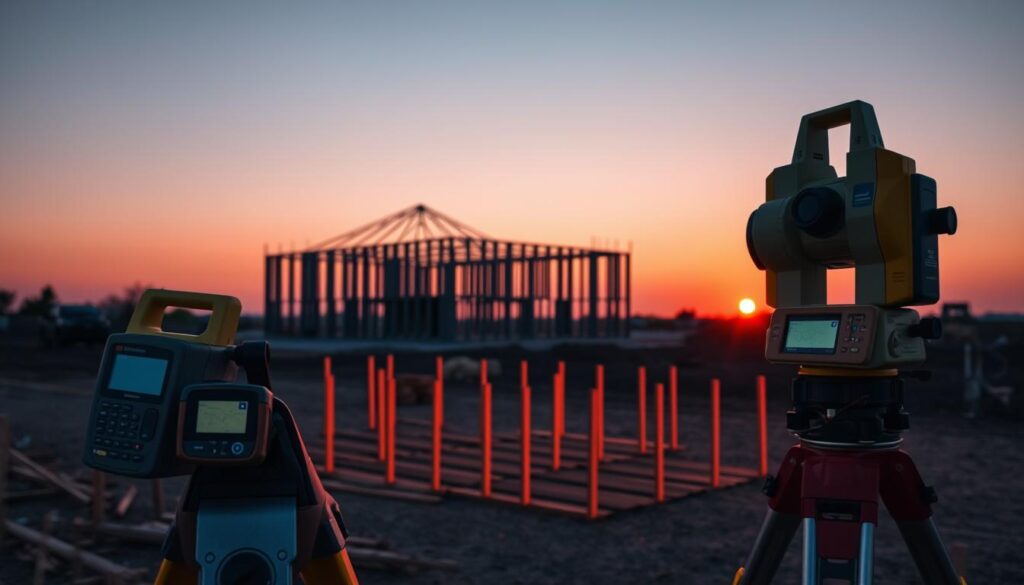
Critical Items That Need to Be Surveyed for Construction
For a construction project to succeed, surveyors must map out key items. These are crucial for the project’s success. They ensure the project is built right, on time, and within budget.
Building Corners and Foundation Layout
Surveyors start by finding building corners and foundation layout. They measure and mark where the building will go. This makes sure it fits with the site and other features.
Utility Locations, Depths, and Conflicts
They also find locations, depths, and conflicts of underground utilities. This includes electric, gas, and water lines. Knowing this helps avoid damage and keeps the project on track.
Roadway Alignments, Profiles, and Cross-sections
For road projects, surveyors look at roadway alignments, profiles, and cross-sections. This info is key for safe roads that fit the terrain.
Drainage Structures and Stormwater Management Features
Surveying drainage structures and stormwater management features is also important. They find where culverts, ditches, and other drainage are. This ensures water flows right and doesn’t pool on the site.
Existing Site Conditions and Topography
Lastly, they document existing site conditions and topography. This includes slopes, water bodies, and plants. It helps plan the construction and spot challenges early.
Surveyors are key to a construction project’s success. They help avoid costly mistakes and delays.
Surveyors’ Perspective: What Contractors Often Misunderstand
It’s key for contractors and surveyors to work well together. Surveyors have a lot of technical knowledge for construction projects. But, contractors often don’t get what surveyors do.
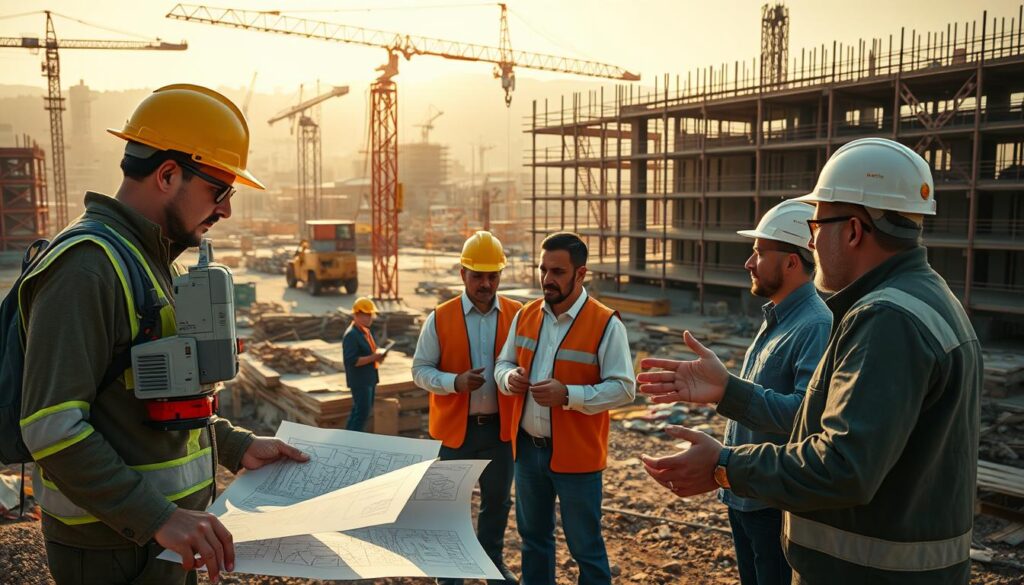
Accuracy Requirements and Technical Limitations
Surveyors must meet strict accuracy standards. This can be tough because of equipment limits, weather, and complex tasks. Contractors should know that surveyors do more than just measure land. They make sure the data is right and trustworthy.
Time Needed for Quality Survey Work
The time for good survey work changes with the project’s details and the survey method. Contractors should remember that rushing survey work can mess up accuracy and slow down the project.
The Importance of Clear Specifications and Drawings
Clear plans and drawings are key for surveyors to do their job right. Mistakes in these can cause problems. Contractors and surveyors need to make sure project details are clear and right.
Legal Responsibilities and Liability Concerns
Surveyors face legal duties and worries that contractors don’t get. They must protect life, health, and property, and help the public. This means following rules and standards.
Professional Standards and Regulations
Surveyors must follow rules and standards that change by place. These rules help ensure survey work is honest and precise. Contractors should know about these rules and how they affect the project.
Documentation Requirements
Good records are vital for surveyors to show their work and follow rules. Contractors should see how keeping accurate records helps solve problems or disputes that come up.
Bridging the Gap: Best Practices for Collaboration
To bridge the gap between contractors and surveyors, we need a few key steps. Working together well is crucial for project success. By using certain strategies, they can collaborate more effectively.
Pre-Construction Planning Meetings
Pre-construction planning meetings are a key start. These meetings help contractors and surveyors talk about the project details. They can clear up any confusion and make sure everyone is on the same page.
Establishing Clear Communication Protocols
Good communication is essential for teamwork. Setting up clear rules for updates and reports helps avoid mistakes. This keeps both sides informed and working together smoothly.
Setting Realistic Expectations for Deliverables
It’s important to set clear goals for what can be done and when. Knowing the limits and challenges helps build trust. This makes working together easier.
Creating Integrated Workflows
Working together better means having integrated workflows. This means making their processes match and using technology to share data. It makes their work more efficient.
Data Sharing Strategies
Sharing data well is key to working together. Good strategies make sure data is shared safely and on time. This helps everyone do their job well.
Quality Control Procedures
Having strong quality control is vital. It checks if the data is right and finds any mistakes. This keeps the project accurate and reliable.
By following these best practices, contractors and surveyors can work better together. This leads to better project results. Understanding each other’s needs is the first step to success.
Technology Advancements Changing the Contractor-Surveyor Relationship
Technology is changing how contractors and surveyors work together. It makes projects more efficient and accurate. The construction world is seeing big changes thanks to new tech that helps teams work better together.
3D Modeling and BIM Integration
3D modeling and Building Information Modeling (BIM) are becoming key in construction. They let contractors and surveyors see projects clearly and spot problems early. By combining BIM with survey data, teams can make sure projects are built right, cutting down on mistakes and improving quality.
GPS and Machine Control Systems
GPS technology and machine control systems make construction equipment more precise. Surveyors give contractors exact layout data. Then, contractors use machine control systems to do work exactly as planned. This makes projects run smoother, saves time and money, and makes sites safer.
Drone Surveying and Photogrammetry
Drone surveying and photogrammetry are changing how surveyors do their job. Drones with high-res cameras take detailed pictures of sites. This lets surveyors make accurate models and track project progress. It’s faster and cheaper than old methods.
Real-time Data Collection and Processing
The construction industry is now using real-time data collection and processing. Surveyors can give contractors the latest info, helping them make quick decisions. Real-time data also helps with better project monitoring, cutting down on delays and cost overruns.
Mobile Applications for Field Verification
Mobile applications help with field verification, letting contractors and surveyors check data on the go. This makes survey data more accurate and ensures work is done right. Mobile apps also help teams report problems and track progress easily.
Conclusion: Building Stronger Partnerships for Project Success
The partnership between contractors and surveyors is key to successful construction projects. They work together well when they understand each other’s needs and challenges. This way, they can finish projects on time and within budget.
Contractors need surveyors for accurate data. This includes property boundaries, building corners, and utility locations. Surveyors, on the other hand, need clear drawings from contractors for precise measurements.
Working together well is vital in the construction industry. By using the latest technology, like 3D modeling and GPS, they can improve their partnership. This leads to better project outcomes.
In the end, a strong partnership between contractors and surveyors is crucial. It ensures projects are done efficiently and meet the required standards.
